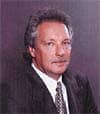The trucking industry among others is paying for their sleep as America continues to become a 24-hour society with increased demands around the clock.
 Kendall R. White, RPSGT
Kendall R. White, RPSGT
Americans have the most freedoms of any country in the world today. We often take our freedoms for granted as we go about our regular routine, and we sometimes forget that our corporate freedoms call for individual responsibilities.
Legislation
Legislation has been passed to help provide certain guidelines for those who cannot seem to make appropriate decisions for themselves and others; for example, the legal level of alcohol consumption before driving, the speed limit that is considered acceptable on any given road, or, for truckers, how long they can be operational before having to stop. For example, in the United States commercial truck drivers are compelled to keep a logbook showing their mileage and operating time, which is not to exceed 10 hours of continuous driving daily, before they must stop and rest for the following 8 hours.1 This regulation was effected in 1938 in order to decrease the number of accidents.
Calculating road gradients vs payloads was not a major engineering factor during the Depression. Interstate systems did not come into existence until the Eisenhower administration. Road systems are actually much better now and signage is everywhere. Trucks are designed better now than they were 65 years ago and schools are required for commercial drivers to adequately train for licensing; however, truckers are again coming under greater scrutiny because of the increase in accidents.
Population Growth
Population growth has changed the face of American roadways, which have to handle exponentially more vehicles, and because of this growth, there is a greater need for truckers to deliver goods for this population to consume. The trucking industry has only so many hours in a day to move goods across America. The National Highway Traffic Safety Administration (NHTSA) states “more than 110,000 people are injured and 5,000 killed in the United States each year in commercial truck accidents.” They further estimate that 30% of the deaths and 70% of the injuries are directly attributable to accidents caused by sleep deprivation.2
By comparison, in 1996, the NHTSA data indicated that in recent years there have been about 56,000 crashes annually in which driver drowsiness/fatigue was cited by the police. Annual averages of roughly 40,000 nonfatal injuries and 1,550 fatalities result from these crashes. The preponderance of evidence is that drowsy driving kills and the problem is escalating. The National Sleep Foundation (NSF) has released a position statement calling for a change in the legislation for commercial drivers. The NSF specifically says, “new rules should limit drivers to 12 hours on duty and 12 hours off duty, with one period of 9 continuous hours to be used for sleep.”
Research
Researchers have found that drivers routinely do not take their full rest period. One out of three drivers admits that they fall approximately 3 hours short of the required 8 hours sleep “norm” for most adults. Part of the reason for this shortage is that there is not enough time off between shifts to allow for “winding down,” family needs, and socializing, as well as the time it takes for getting to and from the work site. Those drivers who are “over-the-road” and have berths on their trucks tend to average even less sleep time because they are allowed to break up the requirement of downtime into halves, meaning they can take 4 hours off, lie down to rest, then go again for another 8 hours before having to take the second 4 hours off.3
Combine this information with the 1993 study of 600 truck drivers performed by the National Commission on Sleep Disorders, which concluded that 46% suffered from moderate to severe sleep apnea. In 1994, researchers from Stanford University found that “truckers suffering from sleep apnea are twice as likely to be involved in an accident than those whose sleep is undisturbed.” William C. Dement, MD, director of the Stanford Sleep Disorders Center, stated, “We’re beginning to realize that drowsiness or sleep deprivation and fatigue is beginning to outstrip alcohol as a cause of accidents in transportation, particularly on the highway.”4 A survey of 593 long-distance truck drivers found that 25% had fallen asleep behind the wheel at least once in the preceding year.
Regulating Sleep
In 1997, the NSF reported that one in three adults was considered “significantly” sleepy using the Epworth Sleepiness Scale. One in 20 scored at the “severe” sleepiness level. This report was not just for truck drivers, but was reported for Americans as a whole. This would imply that not only is the trucking industry a high risk for drowsy driving crashes, but also the general public is becoming increasingly more dangerous. Shift workers and medical personnel who are “on call” also report higher incidences of auto accidents or near misses. Many report falling asleep at the wheel while stopped at a traffic light.5 I have heard numerous patients state this very same thing as they seek medical help for excessive daytime sleepiness.
The trucking industry is being regulated because we have the statistics on their accidents vs the costs of lives and damage, but who is responsible for the intern who has been on shift for the past 36 hours? Or what about the surgical team who just finished their last add-on case at midnight after working for 15 hours and who are still “on call” even after they drive home? Who is regulating the downtime for them when there is a good possibility that their pagers will sound off again at 0200 and they have to come back in for another emergency case? Most hospitals have only two rotation teams for emergent procedures, and invariably, the team who has the “time off” is not the team who is taking calls. It is the team who is already pulling the workload and the add-ons for their specific week who also has to “take calls” during that same time for middle-of-the-night cases. Basic economics dictates that the hospital does not want to retain a third team, and it would be considered anathema for the team who is “off” to cover calls since they would effectively never be off.
Nursing Shortage
The shortage in nursing personnel is causing a greater demand for overtime for those nurses working, which is putting them and the rest of the public at greater risk of being involved in drowsy driving crashes; 95% of the nurses who work night shift have already reported that they have had accidents or near misses while driving home.5
Other night shift employees have flooded the workplace, as we became a 24-hour society with increased demands for goods and services around the clock. Convenience market personnel, factories that are busy all night, and cleaning crews who work all hours also have their shortages and are constantly being asked to pull extra hours or add on extra shifts.
We have the freedom to run to the store at all hours and purchase whatever we want because someone has worked to provide that product and service for us. We have the freedom to log on to any Web site and expect delivery of any desired product within 24 hours because someone was there on the other end making sure the order was processed. We have the freedom to expect that someone will be waiting at the emergency department no matter what time of day because someone gave up time off to work an extra shift. A 24-hour society can lead to a greedy society. Trucking companies make money as long as the wheels are rolling; hospitals make money by increased census and decreased worker’s benefits and training costs; factories make money by increasing volume of production using fewer workers on the job; and individuals make money by increasing the number of hours they agree to work.
I admit that the trucking industry must be regulated, as much for its own protection as well as for society’s as a whole, but what about our own individual responsibility? If we do not regulate ourselves and determine our specific sleep needs vs how many hours of overtime we can squeeze into a week vs our driving abilities, who’s going to regulate us?
Kendall R. White, RPSGT, is regional director, sleep and neurodiagnostics, Parkridge Health System, Chattanooga, Tenn, and Paula Williams, MA, RPSGT, is a sleep technician, Parkridge Medical Center, Chattanooga, Tenn.
References
1. Mitler MM, Miller JC, Lipsitz JJ, Walsh JK, Wylie CD. The sleep of long-haul truck drivers. N Engl J Med. 1997;337:755-761.
2. NHTSA, National Center on Sleep Disorders Research. Program to combat drowsy driving report to the House and Senate Appropriations Committees. Available at: http://www.nhtsa.dot.gov /people/perform human/ drowsy2/drdr vrep.htm. Accessed March 21, 2002.
3. National Sleep Foundation. National Sleep Foundation calls for new commercial drivers’ hours-of-service rules based on sleep science. NSF recommends 12/12 duty rule with limits to on-duty time. Available at: http://www.sleepfoundation.org/pressarchives/hos_rules.html. Accessed March 23, 2002.
4. Dement WC, National Center on Sleep Disorders. Drowsy driving and automobile crashes—1993. Available at: http://www. nhlbi.nih.gov/health/prof/sleep/drsy_drv.htm. Accessed March 21, 2002.
5. NCSDR/NHTSA Expert Panel on Driver Fatigue and Sleepiness. Drowsy driving and automobile crashes. Available at: http://www.nhtsa.dot.gov/people/perform/human/drowsy.html. Accessed March 20, 2002.



